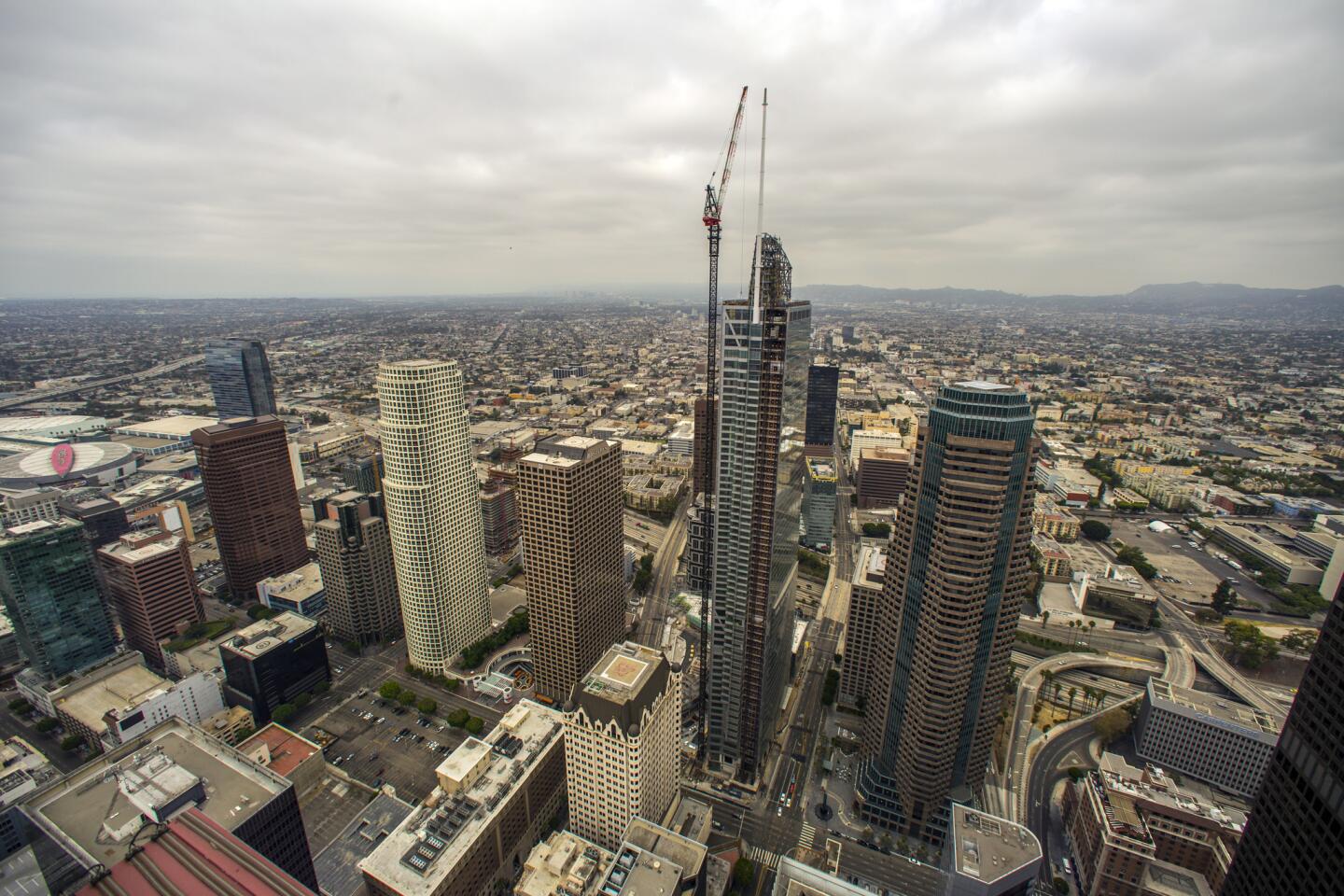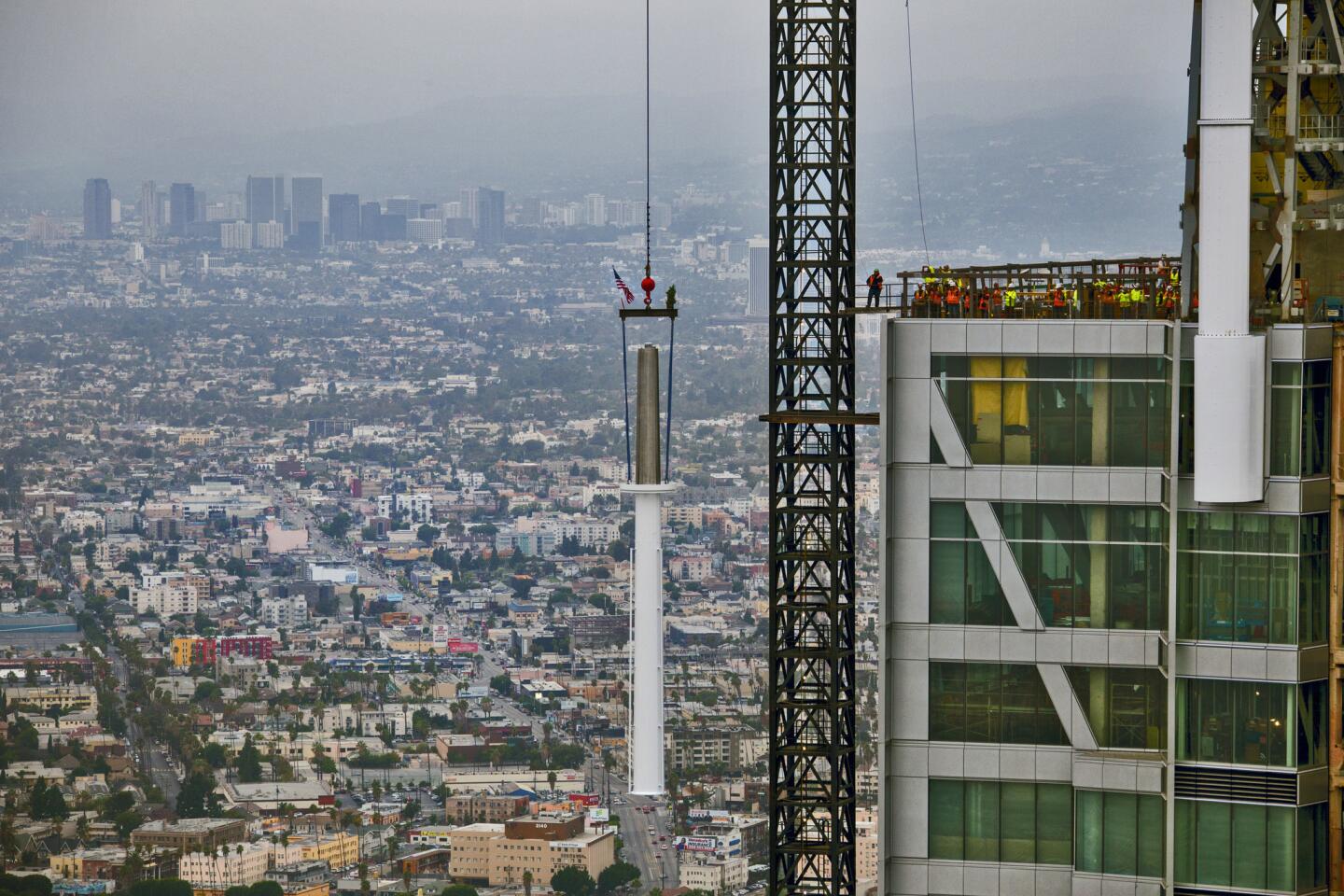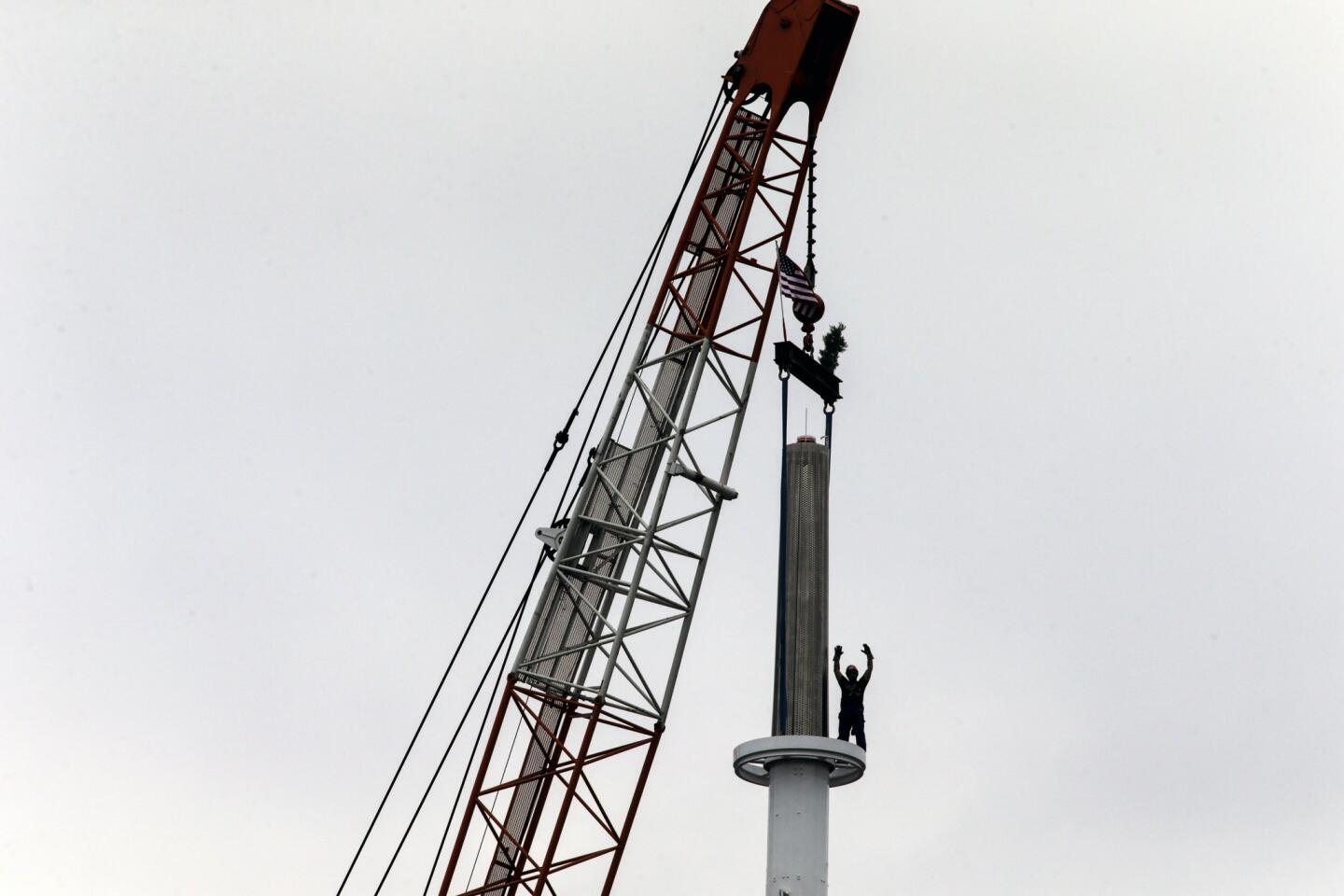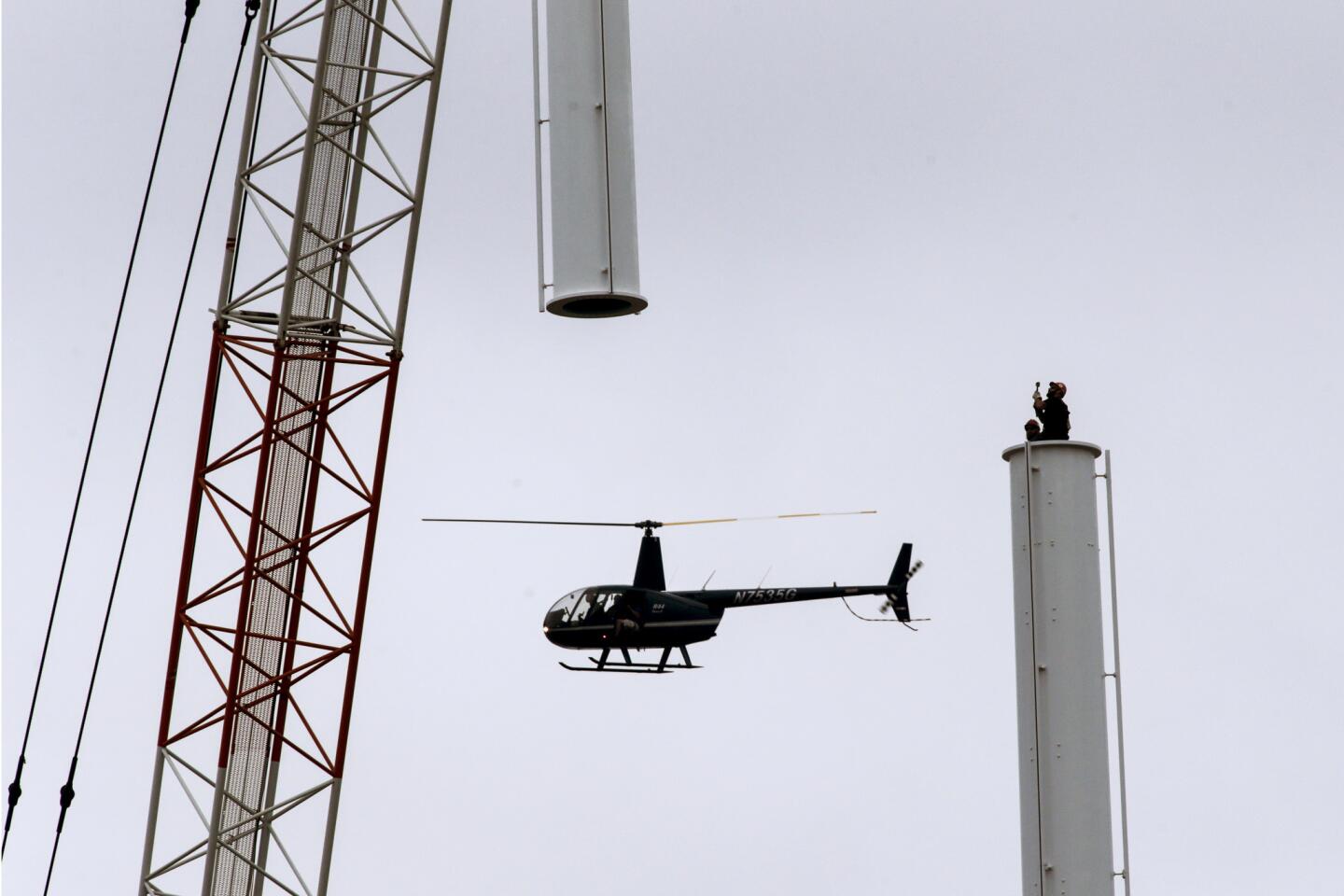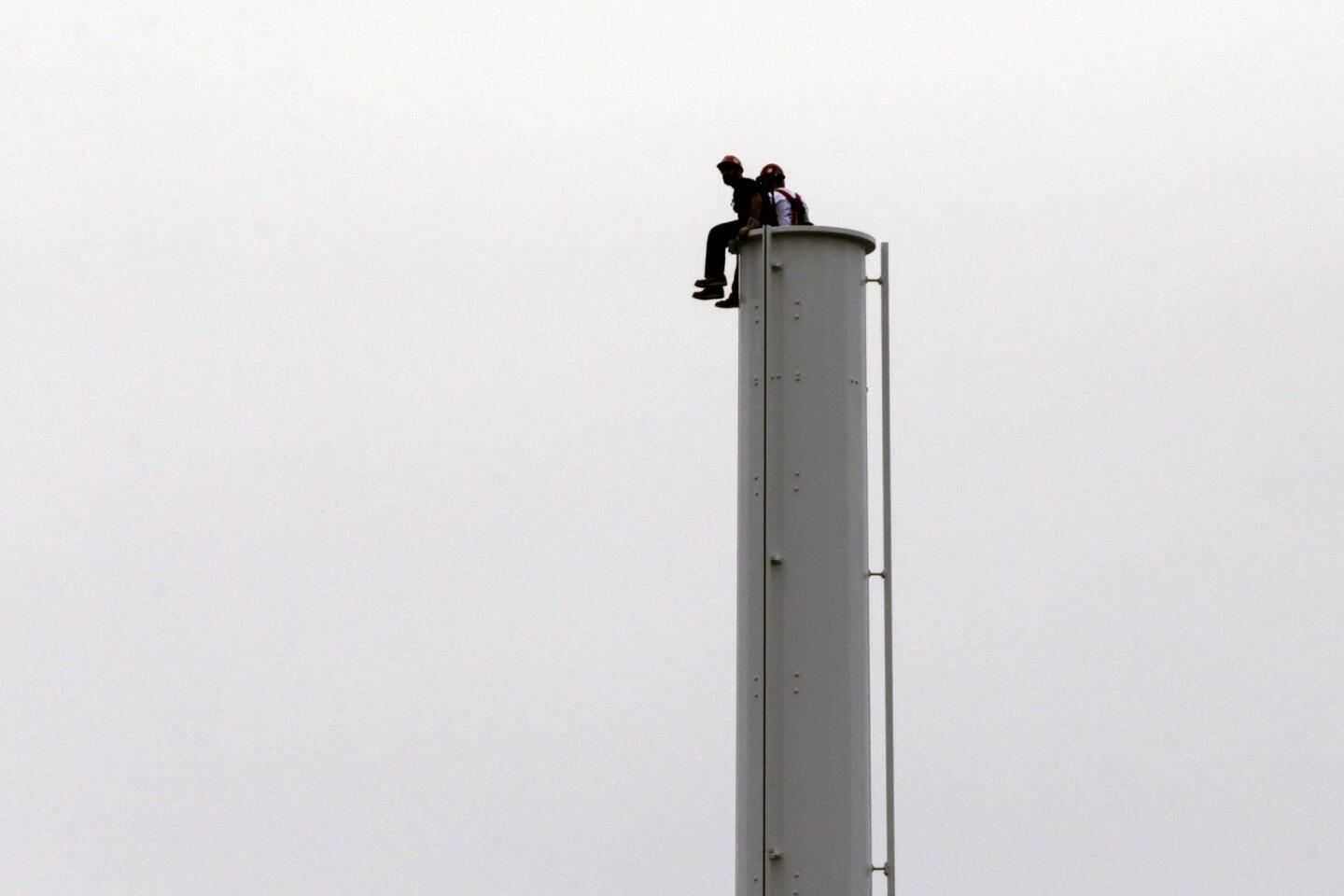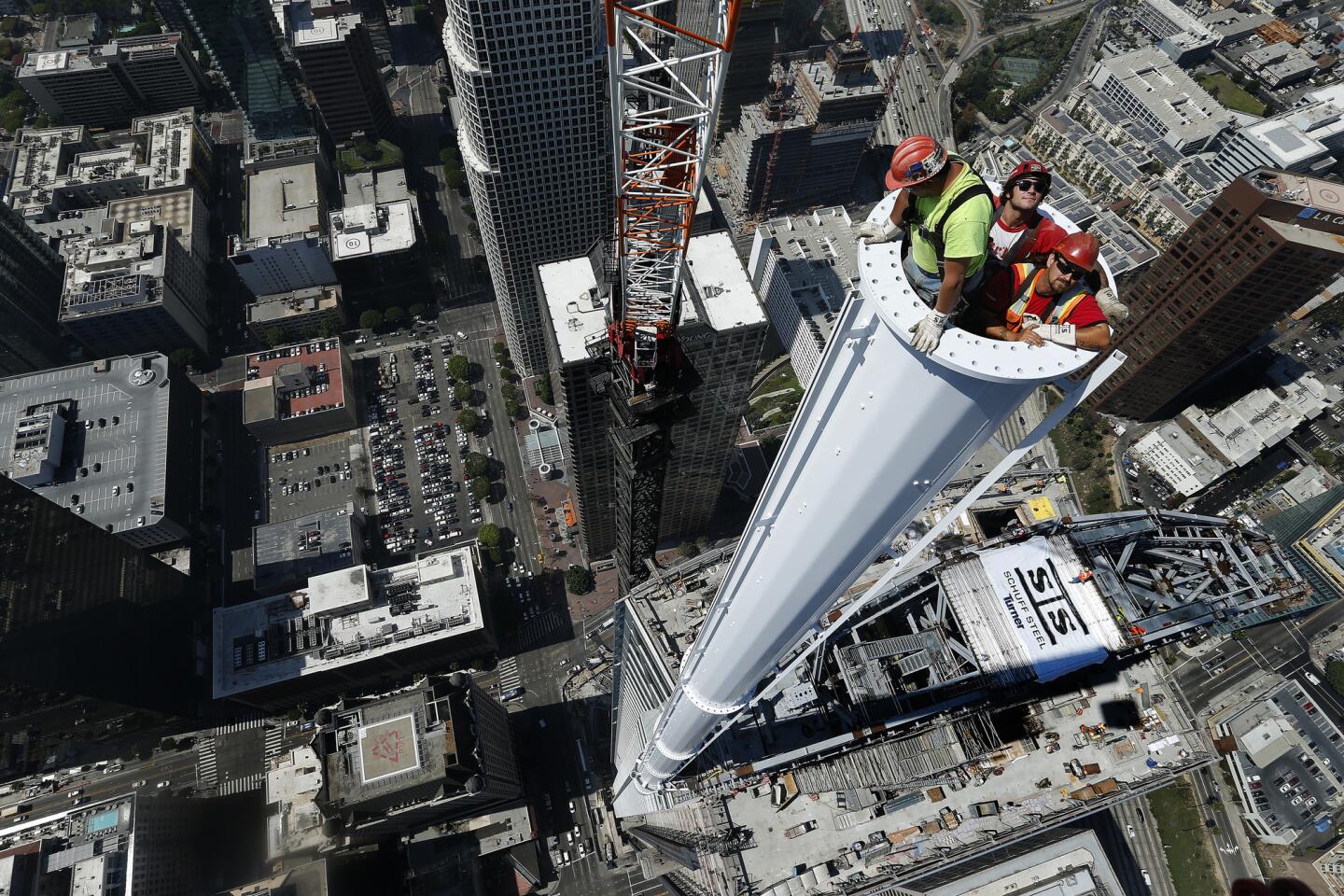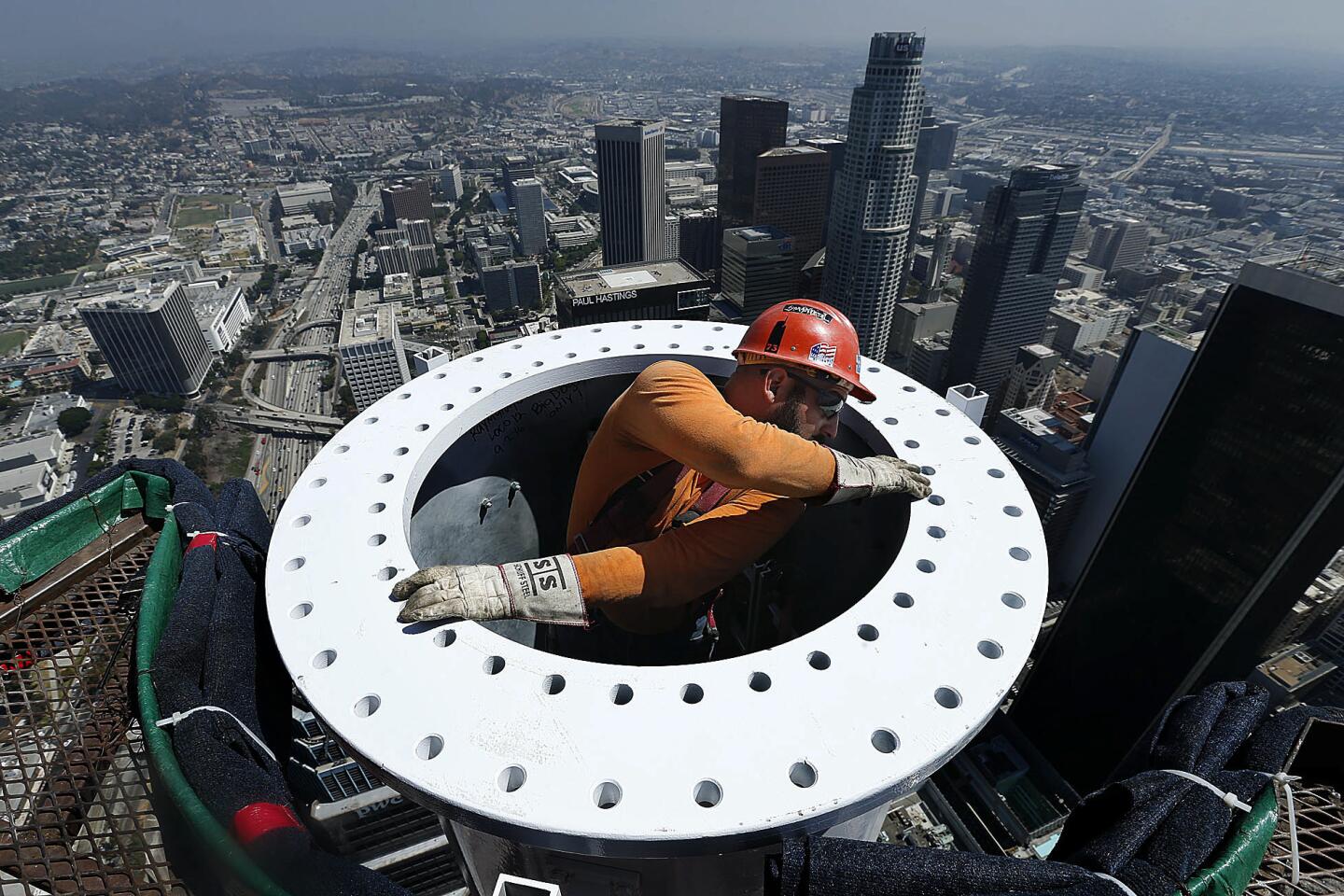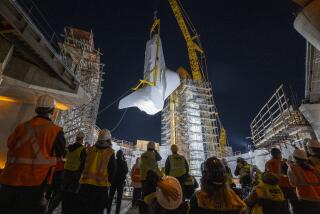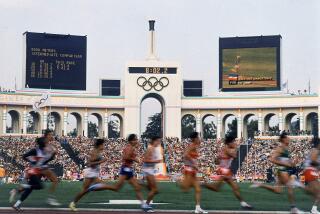With spire in place, Wilshire Grand stretches skyward to become tallest building in western U.S.
At 7:22 a.m. Saturday, crane operator Josh Wiggins received his instructions on the radio.
âAll free and clear. Coming up.â
From his cab 1,000 feet above downtown Los Angeles, Wiggins pulled back the hoist level and began raising the last piece of steel at the Wilshire Grand job site.
The 58-foot, hollow cylinder, weighing 20,000 pounds, glided vertically into the space above the street, almost in levitation.
Eight minutes later, Wiggins lowered his 4-foot diameter load into position, bringing it to rest atop its partner, a 236-foot cylinder that had been raised earlier, one straw on top of another. The spire for the Wilshire Grand, 1,100 feet above Figueroa Street, was complete, and Los Angeles could claim title to home of the tallest skyscraper west of the Mississippi River.
Nearly 50 construction workers in yellow-and-orange fluorescent vests congregated on the high-riseâs unfinished floors, gazing skyward. A pair of helicopters circled beneath gray skies, photographers leaning through open doors to document the occasion, and on the roof of the nearby Aon Center, 62 stories high, architects, engineers, construction managers and media crowded the parapet, cameras poised.
Positioned inside the spire and out of sight, two iron workers, Eric Madrigal and Dan Cobbs, began torque-wrenching the nearly 70 bolts that would hold the two sections together. Wiggins held the craneâs load steady.
In addition to its height, the Wilshire Grand has the added distinction of changing the skyline of Los Angeles with a rooftop that is neither truncated nor flat. The spire, designed in tandem with a 10-story steel-and-glass crown, rises above an outdoor terrace on the 73rd floor. The architectural features of the spire, which is illuminated at night, are mostly ornamental and were developed in negotiation with city officials and the Los Angeles Fire Department.
Los Angelesâ flat-topped skyline had been required since the 1970s as a safety feature to accommodate landing sites for helicopters in the event of emergencies. Architects for the Wilshire Grand, however, proposed an alternative that reflected a more modern approach to high-rise design. It included a tactical landing platform, an elevator designed exclusively for firefighting and a video surveillance system to monitor each floor in the event of a fire.
With half the bolts in place, Wiggins began to let the weight of his load settle into place. Madrigal climbed the ladder inside the spire to the top, where he stepped through a small hatch. Standing on a narrow lip just beneath the tip â 18 feet of burnished and perforated stainless steel that soon will be lit red, blue, green or gold â he unfastened the spreader to the crane. The spire was in place.
At 8:06 a.m., Wiggins delivered two blasts from the craneâs air horn, and Madrigal lifted his arms over his head.
With a red navigation beacon glowing at its peak, the Wilshire Grand had entered the history books.
MORE
Behind the Grand Pour: Building L.A.âs new tallest tower
New skyscrapers vie for West Coastâs âtallestâ title
They built towering new cities in China. Now theyâre trying it in downtown L.A.
More to Read
Sign up for Essential California
The most important California stories and recommendations in your inbox every morning.
You may occasionally receive promotional content from the Los Angeles Times.
